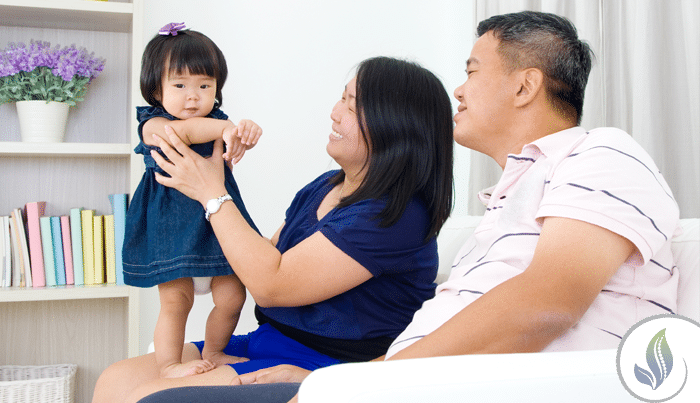True Correction vs. Temporary Relief

True Correction vs. Temporary Relief
The difference between principled chiropractic corrective care and temporary relief care is the difference between optimal health and just feeling good.
Although chiropractic is effective in providing patch-up or pain relief treatment, we have found that correcting the spine offers long term benefits. This is why our office specializes in principled chiropractic care.
Thanks to technological advances and new understanding of the spine and nervous system, we are now able to correct the spine and use pre- and post- x-rays to document this change. These changes are achieved through a series of specialized gentle adjustments. If we are able to accept your case, a care plan will be recommended based on factors which include the pre-existing levels of degeneration in your spine, your age, your levels of activity, and your response to an adjustment. Not every spine is correctable for us, so we always start with a checkup to evaluate your potential for success in our office.
When a person seeks chiropractic care and when their chiropractor accepts them for chiropractic care, it is essential that they are both working toward the same goal. Traditionally, the focus of health care is centered around a person’s symptoms and the treatment or relief of their symptoms. This is the entire basis for relief care. Today, chiropractic care is very well known for its ability to provide relief care and is often referred to as miraculous in its ability to provide relief when all other forms of health care have failed. However, although many chiropractors specialize in and are extremely successful with providing relief care, this was never the intended purpose for chiropractic. Chiropractic from its inception over 110 years ago was designed to be a principled form of health care. The goal or objective of chiropractic is to identify the underlying cause of a person’s health challenge and to correct it. A condition of the spine known as “Vertebral Subluxation” interferes with the body’s natural ability to heal itself. Principled and wellness chiropractors locate vertebral subluxations, thoroughly analyze all of its components, design a specific program of adjustments and exercises to correct vertebral subluxations. Most importantly, principled and wellness chiropractors help you and your family learn how to achieve a state of optimal health and how to maintain a healthy spine into the future.
To fully appreciate and understand this difference and the importance of principled care, let’s start by looking at the difference between “symptoms” and “warning signs”. The difference is best understood through a simple comparison. If a person sprains their ankle and experiences pain in their ankle – this is a direct relationship. The location of pain and the location of the injury are the same. This is a classic example of a symptom. However, if a person is suffering from heart disease and is experiencing pain into their left arm – there is likely nothing wrong with the left arm! This is a classic warning sign of a problem with the heart. It would seem quite silly – even foolish – to spend a tremendous amount of energy and resources treating a person’s arm pain when the cause of this pain is coming from the heart.
Very similarly with the spine – if vertebral subluxation is affecting the spine and causes pressure on the nerve going to your leg, over time you may begin to experience leg pain (commonly called sciatica). However, if we examine and treat the leg, we would be doing so in vain since this is a warning sign telling us of the problem in the spine. What type of warning sign we may experience depends on which nerve(s) in the spine is being affected (be sure to see the Vertebral Subluxation Nerve Chart). Fortunately, or unfortunately, there is often a significant time delay between the onset of subluxation and the first warning sign. This is because of our bodies’ amazing ability to adapt to both its internal and external environment. For example, if you have a pebble in your shoe, you don’t lean on it – you lean off of it. Your body behaves very similarly in relation to vertebral subluxation.
Very commonly, one of the first vertebral subluxations to occur in the spine is in the neck. This is for a variety of reasons, including the fact that the vertebra, ligaments, and muscles in the neck are the smallest; and the head (in particular in children) is disproportionately heavy in comparison to the body. Small slips and falls as a child, and even the birth process itself, can result in the small vertebra of the neck becoming displaced or subluxated. The body, behaving very intelligently, will change its posture – often shifting the head well in front of the shoulders and leaning the head to one side or to the other, in order to reduce the pressure the subluxation places on the spinal cord. As a result of the change in head posture, the rib cage may bend or shift to reduce pressure on the spinal nerves. Similarly, the big muscles of the lumbar spine and pelvis will compensate to further reduce the unwanted pressure on the spinal nerves. For the body, this is a much better state than suffering the immediate and devastating affects of spinal cord and spinal nerve pressure. However, this leaves the pressure on the vertebral discs imbalanced, and causes them to begin wearing out at a progressive rate.
It is most often not until the discs of the spine begin to significantly wear and the body begins losing its ability to naturally compensate to the vertebral vubluxations that we start seeing the intermittent warning signs related to subluxation (be sure to see the Subluxation Degeneration page). Quite often, the first place in the spine to begin to fail and to lose its ability to compensate is the lumbar spine. This is because all of the forces of gravity within the body affect the lumbar spine. Additionally, over time lifting items which are no problem for a healthy spine actually weakens areas of the spine with vertebral subluxation degeneration. We may start avoiding things which we used to do with ease because they now cause us pain. However, this avoidance is often the result of continued degeneration that occurs as we ignore the warning signs which our body is giving us. In this situation, if we begin treating this person’s lower back pain, without thoroughly analyzing their vertebral subluxations and without recognizing that the cause is actually coming from a vertebral subluxation in their neck – we may be able to temporarily relieve their lower back pain, but it will only be a matter of time before it returns. The back pain was simply a warning sign.
Principled and wellness care chiropractors specialize in detecting, analyzing, correcting, and, in some cases, minimizing vertebral subluxation. Our education programs are designed to help you heal as fast as possible and to achieve a state of optimal health. Most importantly, we will help you learn how to keep your spine, and the spines of your family members, healthy into the future.
We specialize in principled and wellness chiropractic care. We provide specific, scientific, chiropractic adjustments with repetition, over time, to correct the cause: the vertebral subluxation.
We get amazing results. We look forward to serving you!
The Winsor Autopsies
Can an Unhealthy Spine Affect Internal Organs?
At the University of Pennsylvania, Dr. Henry Winsor conducted an experiment based on chiropractors’ claims that, by adjusting the vertebrae, they can relieve stomach troubles, ulcers, menstrual cramps, thyroid conditions, kidney disease, constipation, heart disease, lung and other diseases. In this experiment, he dissected both human and animal cadavers to see if there was any relationship between diseased internal organs discovered in autopsy and the vertebrae and nerves that went to the organs. Dr. Winsor dissected 75 human and 72 cat cadavers. He found a nearly 100% correlation between minor curvatures of the vertebrae and diseases of the internal organs.
Heart Disease
All 20 cases with heart and pericardium conditions had the upper five thoracic vertebrae misaligned (T1-T5).
Lung Disease
All 26 cases of lung disease had spinal misalignments in the upper thoracic area.
Stomach Disease
All nine cases of stomach disease had spinal misalignment in the mid-thoracic area (T5-T9).
Liver Disease
All 13 cases of liver disease had misalignments in the mid-thoracic area (T5-T9).
Gallbladder
All five cases with gallstone disease had spinal misalignments in the mid-thoracic area (T5-T9).
Pancreas
All three cases with pancreas disease had spinal misalignments in the mid-thoracic area (T5-T9).
Spleen
All 11 cases with spleen disease had spinal misalignments in the mid-thoracic area (T5-T9).
Kidney
All 17 cases with kidney disease were out of alignment in the lower thoracic area (T10-T12).
Prostate and Bladder Disease
All eight cases with prostate disease had the lumbar vertebrae misaligned.
Uterus
Two cases with uterine conditions had the second lumbar misaligned (L2).
Information from: Winsor, 11. Sympathetic segmental disturbances-11. The evidence association, in dissected cadavers, of visceral disease.;
Current Chiropractic Care News

Should I consider chiropractic care for my baby?
A lot of parents come to our clinic because they're interested in getting care for themselves, but often they are surprised to see that we also treat children, toddlers, and newborns. When they hear and see us caring for babies and newborns, and the most common...

Specific Scientific Chiropractic Care - Serving Palm Beach & Martin Counties
When family members are constantly sick and suffering, it puts a strain on the family unit.
Pain and sickness can steal joy from our lives, so we believe that as families grow healthy together, they also grow closer together as a unit.
True Vine Chiropractic - Jupiter, FL 33458
Office Hours:
Monday 10AM–12:30PM, 2:30–6:15PM
Tuesday 2:30–6:15PM
Wednesday 8:30AM–11:30AM, 1:30–4:00PM
Thursday 10AM–12:30PM, 2:30–6:15PM
Friday Closed
Saturday Closed
Sunday Closed
